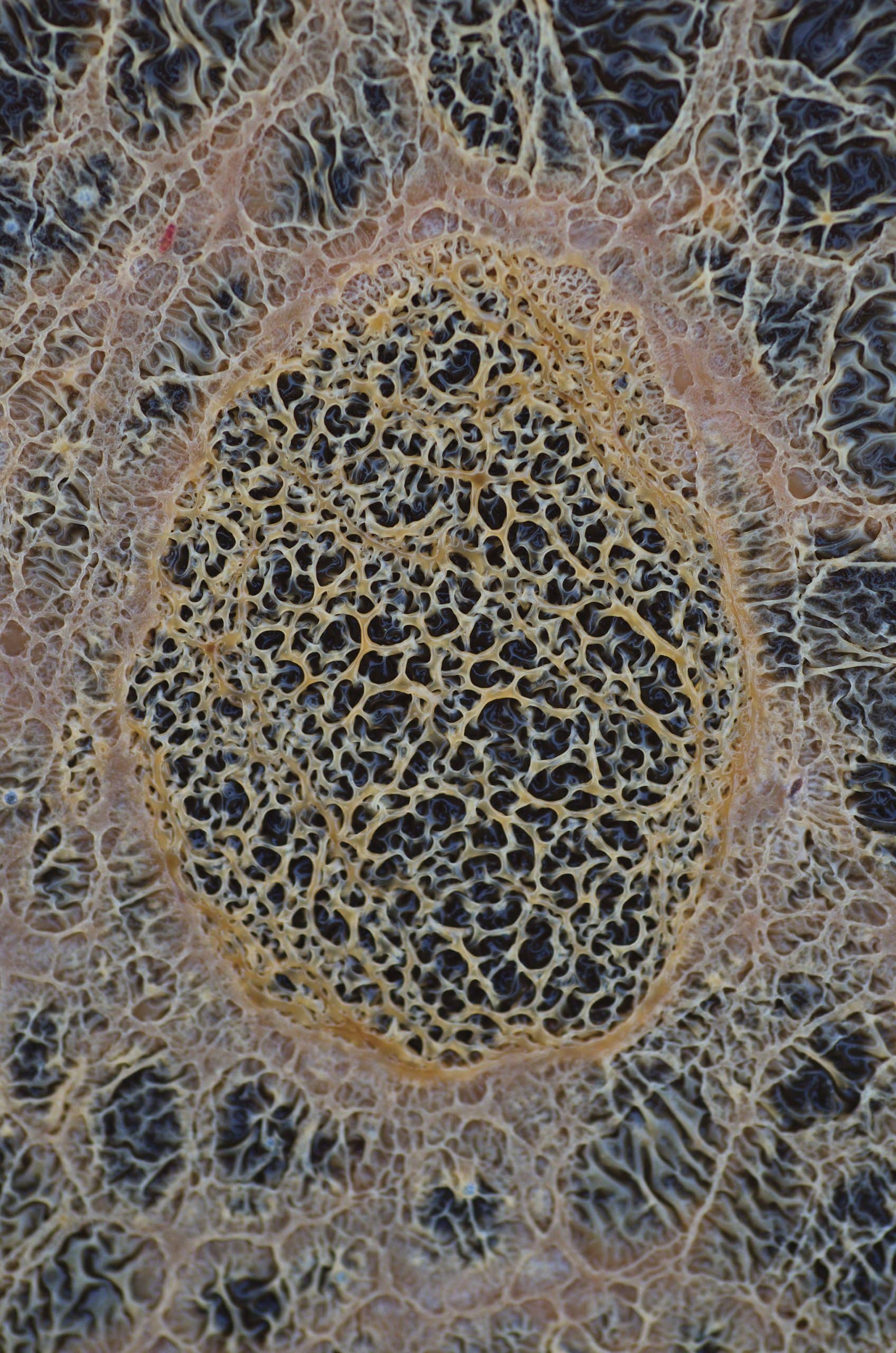I am of the opinion that art should not be dependent on explanations, but sometimes a little background is necessary.
What are you looking at? What are these strange, beguiling photographs? Simply put, they are photographs of cow urine and the remarkable transformations it undergoes. However, they are much more than this. They are a window into nature in all its infinite, glorious complexities.
Where to begin with Imre and his unique, extraordinary vision? Behind the work stands the man, so let us start there. Imre is an artist of great depth and beauty, that much is obvious, but he is much more than that. he makes his living on a small family dairy farm, tucked away on the edge of a nondescript town floating on the vast Pannonian plain, Europe’s breadbasket and a region that has hopped borders regularly for hundreds if not thousands of years as history has ebbed and flowed across this most volatile of regions.
Hungarian by blood, German by birth and Serbian by nationality his background perfectly encapsulates the turbulent history and fluidity of this area. His work draws both on his close connection with nature and the animals we depend upon for our food, specifically in this case, the humble cow. This humble cow is as good a symbol as any of the confusing and changeable times we are living in.
When I was a child cows were everywhere.
They were a staple of our children’s stories and books and cowboy films. You actually saw them, placidly munching on grass in the meadows, filling their udders with the milk we drank and made delicious cheeses from. Part of our cultural and rural life for centuries, they were also curiously modern. They were milked by shiny machines and that milk was delivered to your door in electric vehicles. The empty milk bottles were collected by the milkman, washed, sterilised and recycled. Fast forward a few decades and they have become emblematic of our environmental and social upheaval, unwitting ecological villains. Locked away in vast dark sheds they apparently produce vast clouds of toxic methane gases and consume enormous amounts of once abundant and now precious water.
Their milk is now seen by many as toxic, their cream as slow creeping death.
Whether this is an accurate portrayal or simply a convenient scapegoat diverting attention from the ravages of an out of control fossil fuel dependence I don’t know, but I do know this, cows did not change, we did. In our ceaseless search for convenience and profit we neglected the old ways, we tried to control nature, we became cruel.
These photographs force us to reevaluate our relationship with nature.
They take us on a journey from the tiniest particles of our being to the vast expanses of real and imagined galaxies. I see multitudes here.
Every time i look at this work it takes me on a different journey through my imagination and every time I am grateful to the humble cow.






